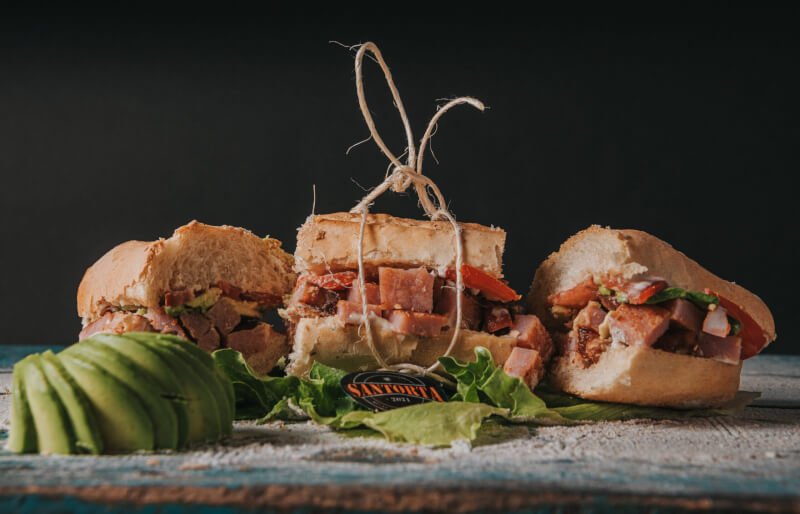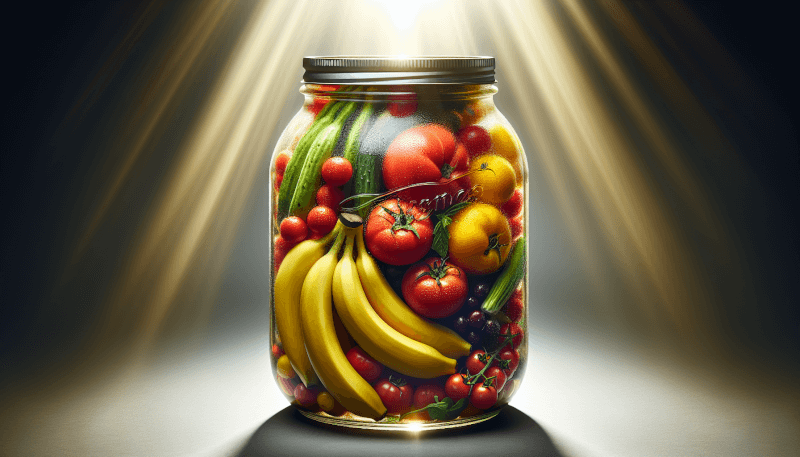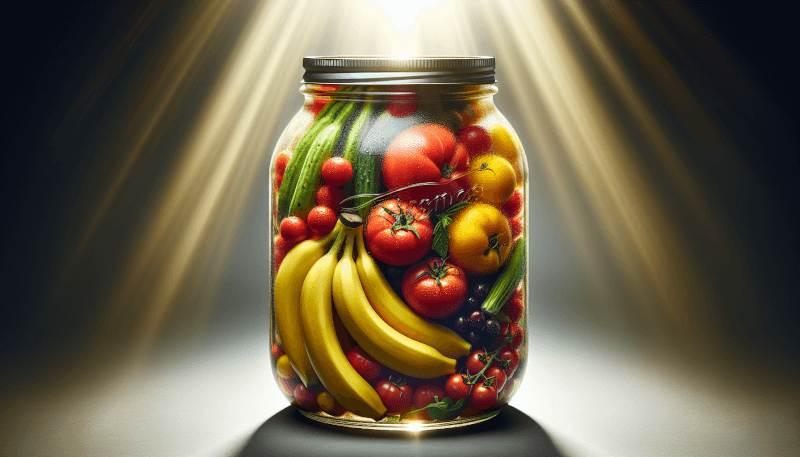In “Canning 101: A Beginner’s Guide To Food Storage,” you will discover the essential knowledge and skills needed to start your own canning journey. Whether you’re looking to preserve the abundance of your garden, reduce food waste, or simply have delicious homemade goodies all year round, this article will equip you with the know-how to safely and successfully can fruits, vegetables, and more. From understanding the basics of canning to choosing the right equipment and recipes, this beginner’s guide will empower you to take control of your food storage with confidence and enjoyment.

Choosing the Right Equipment
Types of Canning Equipment
When it comes to canning, having the right equipment is essential. There are two main types of canning methods: hot water bath canning and pressure canning. Each method requires different equipment to ensure the safety and success of your food preservation efforts.
For hot water bath canning, you will need a large stockpot with a rack, as well as canning jars, lids, and bands. The stockpot should be deep enough to fully submerge the jars in water and allow for proper heat distribution. The rack is important to keep the jars off the bottom of the pot and prevent them from coming into direct contact with the heat source.
On the other hand, pressure canning requires a pressure canner. Unlike a regular stockpot, a pressure canner is designed to reach and maintain high temperatures necessary for safely canning low-acid foods such as vegetables, meat, and fish. It is equipped with a pressure gauge or weighted valve to regulate the pressure inside the canner.
Essential Tools for Canning
In addition to the main canning equipment, there are several essential tools that will make your canning process easier and more efficient. These tools include:
Jar lifter: A jar lifter is a specialized tool designed to safely lift and maneuver hot canning jars in and out of boiling water. It has a long handle and gripping tongs that securely hold the jars, minimizing the risk of burns and accidents.
Canning funnel: A canning funnel is a wide-mouthed funnel that fits perfectly into jars, allowing you to easily pour ingredients into them without spilling or making a mess. It helps ensure that your jars are filled evenly and cleanly, reducing the chances of contamination.
Bubble remover/headspace tool: This handy tool is used to remove air bubbles from filled jars and measure the correct headspace, which refers to the empty space between the food and the lid. Removing air bubbles helps prevent spoilage and ensures a tight seal.
Magnetic lid lifter: When canning, it’s important to use new canning lids to ensure a proper seal. A magnetic lid lifter makes it easy to retrieve lids from a hot sterilization bath without touching them, reducing the risk of contamination.
Safety Equipment for Canning
Safety should always be a top priority when canning. Therefore, it is important to have the right safety equipment on hand to protect yourself from potential hazards. Some essential safety equipment for canning includes:
Heat-resistant gloves: When dealing with hot jars and boiling water, heat-resistant gloves provide an added layer of protection for your hands and arms. They help prevent burns and scalds, allowing you to handle and move hot items safely.
Apron or protective clothing: Canning can be a messy process, and spills or splatters can occur. Wearing an apron or protective clothing adds an extra barrier between hot liquids and your skin, reducing the risk of burns and stains.
Safety goggles: Boiling water and steam can pose a risk to your eyes. Wearing safety goggles protects your eyes from potential splashes or steam burns, ensuring your safety while canning.
Fire extinguisher: While rare, it’s important to be prepared for emergencies. Keep a fire extinguisher nearby in case of accidental fires. Make sure it is rated for all types of fires, including grease fires.

Understanding the Basics of Canning
What is Canning?
Canning is a food preservation method that involves sealing food in jars or cans and then heating them to destroy bacteria, yeasts, and molds that could cause spoilage or foodborne illnesses. By creating a vacuum seal in the container, canning helps extend the shelf life of foods, allowing you to enjoy fresh and delicious flavors long after the harvest season.
Benefits of Canning
There are several benefits to canning your own food. Firstly, it allows you to have control over the ingredients and quality of the food you consume. You can choose fresh, high-quality ingredients and avoid preservatives or additives that may be present in commercially canned foods. Canning also allows you to preserve the flavors of seasonal produce, ensuring you have access to your favorite foods all year round.
Another advantage of canning is cost savings. Buying fresh produce in bulk during the peak season and canning it can help you save money compared to purchasing canned or frozen foods. Additionally, canning reduces food waste by utilizing excess produce that might otherwise go unused or spoil.
Choosing the right foods for canning
Not all foods are suitable for canning, so it’s important to choose the right ones to ensure a successful and safe canning process. Generally, acidic foods such as fruits (e.g., berries, peaches, and apples) and high-acid vegetables (e.g., tomatoes) can be safely canned using the hot water bath canning method.
Low-acid foods, including vegetables (e.g., carrots, beans, and corn) and meats, require the use of a pressure canner to reach the high temperatures necessary to kill harmful bacteria like Clostridium botulinum, which causes botulism. It is crucial to follow approved recipes and guidelines when canning low-acid foods to ensure their safety.
It is important to note that some foods, such as certain herbs, dairy products, and thickening agents, are not recommended for home canning due to safety concerns. Always refer to reputable canning resources, such as university extension services or trusted canning books, for guidance on which foods are safe for canning.

Preparing Your Ingredients
Selecting Fresh and High-Quality Ingredients
When it comes to canning, the quality of your ingredients is paramount. Select fresh, ripe, and high-quality produce to ensure the best flavor and texture in your canned goods. Choose fruits and vegetables that are free from bruises, mold, or signs of spoilage. For optimal results, harvest or purchase your ingredients at their peak ripeness.
Washing and Sanitizing
Before starting the canning process, it is crucial to wash your ingredients thoroughly to remove any dirt, pesticides, or bacteria. Use cool running water and a vegetable brush to gently scrub the surfaces of fruits and vegetables. For leafy greens, separate the leaves and soak them in a bowl of cold water for a few minutes, then rinse and drain.
Along with washing the ingredients, it is also important to sanitize your canning equipment to prevent cross-contamination or the introduction of harmful bacteria. Wash your jars, lids, and bands in hot, soapy water, rinse them thoroughly, and then place them in boiling water for 10 minutes to sterilize.
Prepping the Ingredients
Once your ingredients are clean, it’s time to prepare them for canning. Follow the recipe instructions for washing, peeling, and cutting the fruits or vegetables according to the desired size and consistency. Some recipes may require blanching or precooking certain ingredients to maintain texture and remove any excess water. Always refer to a trusted recipe source for specific preparation instructions.

Hot Water Bath Canning
The Process of Hot Water Bath Canning
Hot water bath canning, also known as boiling water canning, is the most common method used for canning high-acid foods. The process involves placing filled jars into a large pot of boiling water and processing them for a specific amount of time to kill any bacteria and create an airtight seal.
Required Equipment for Hot Water Bath Canning
For successful hot water bath canning, you will need the following equipment:
Large stockpot with a rack: The stockpot should be deep enough to fully submerge the jars in water and allow for proper heat distribution. The rack helps keep the jars off the bottom of the pot and prevents them from directly touching the heat source.
Canning jars, lids, and bands: Choose jars specifically designed for canning, ensuring they are made of tempered glass and have a sealing system compatible with the lids and bands. Lids should be new and free from defects or dents.
Steps to Follow for Hot Water Bath Canning
- Prepare your recipe and gather all the necessary ingredients and equipment.
- Fill the stockpot with enough water to cover the jars by at least 1 inch and bring it to a boil.
- Wash your jars, lids, and bands in hot, soapy water and rinse well.
- Fill the jars with your prepared ingredients, leaving the recommended headspace specified in the recipe.
- Wipe the rims of the jars with a clean, damp cloth to remove any food residue or spills.
- Center a lid on top of each jar and screw on the band until fingertip tight – not too tight or too loose.
- Using a jar lifter, lower the filled jars into the boiling water, making sure they are fully submerged and not touching each other or the sides of the pot.
- Return the water to a gentle boil, then start the processing time as indicated by the recipe.
- Once the processing time is complete, carefully lift the jars out of the water using the jar lifter, and place them on a towel or cooling rack to cool undisturbed.
- Over the next 12 to 24 hours, you will hear a popping sound as the lids seal. This is a sign of successful canning. After cooling, check the seals by pressing down on the center of the lids – they should not flex or make a popping sound.



